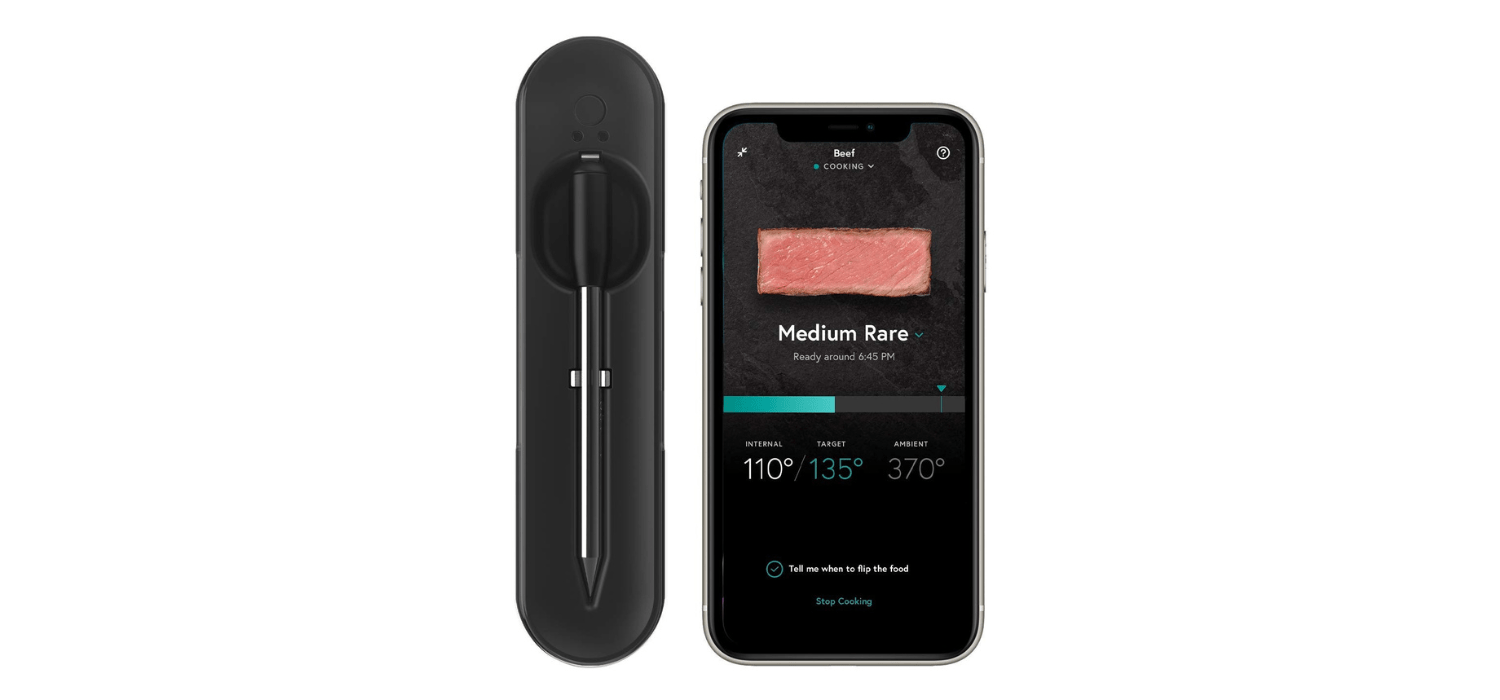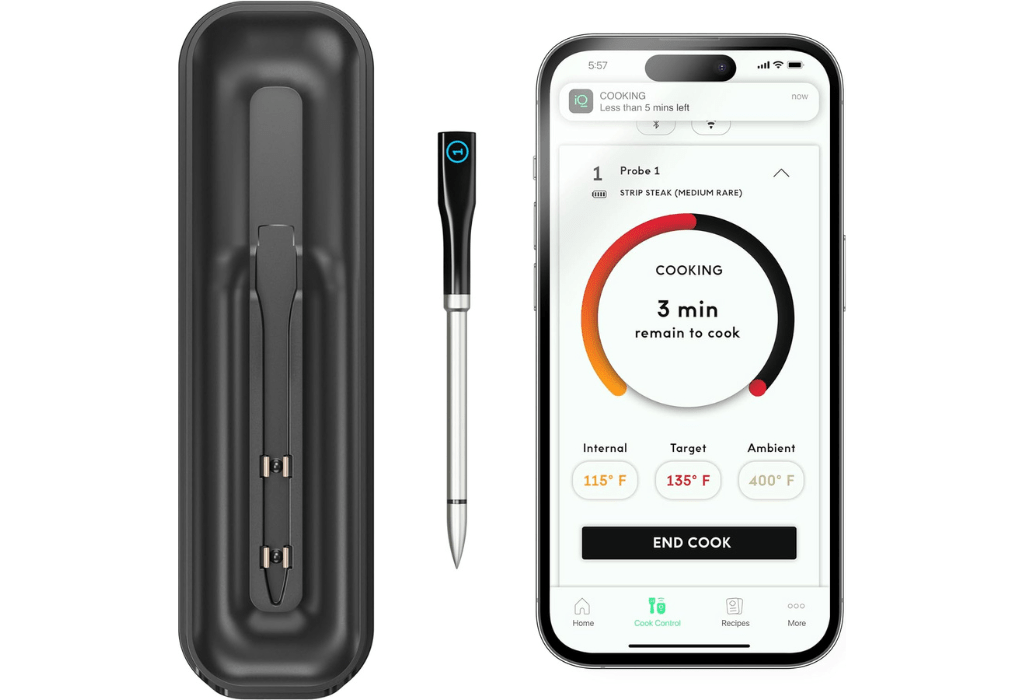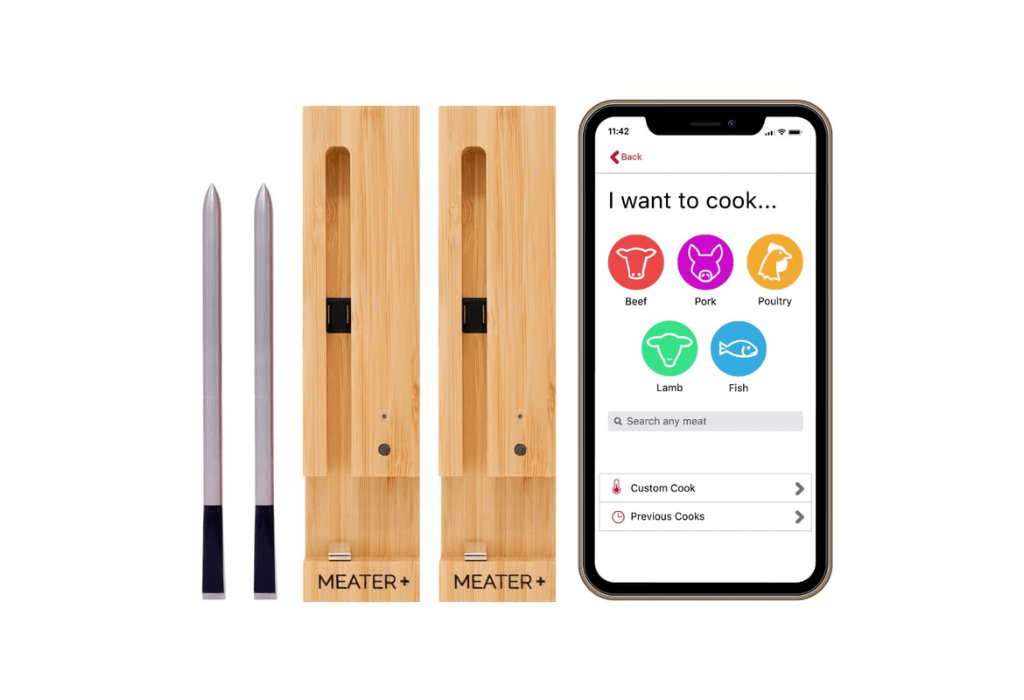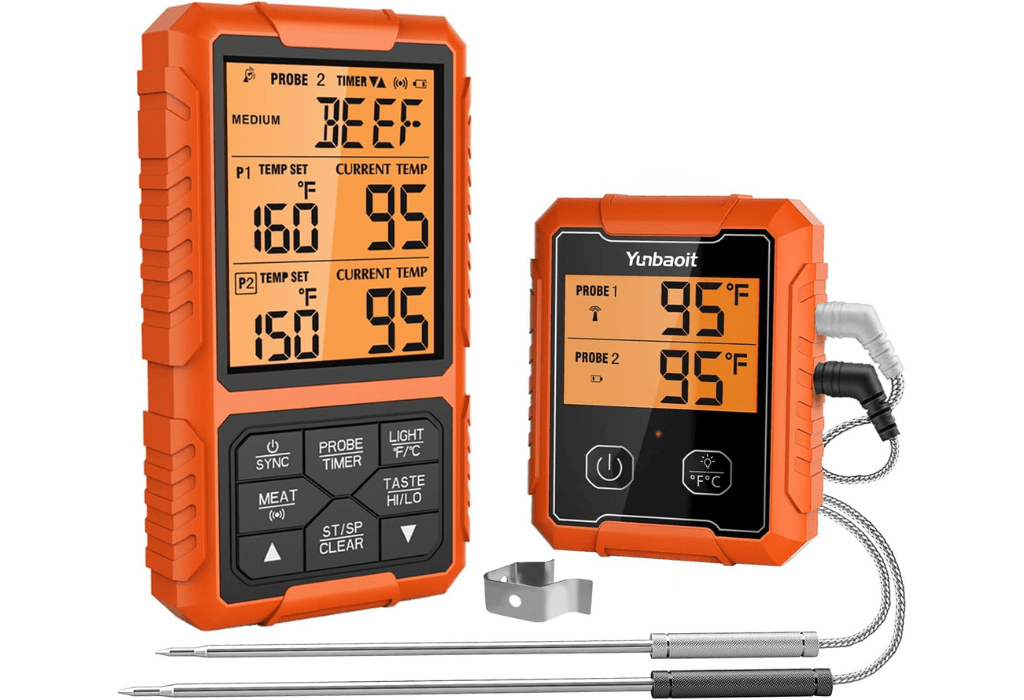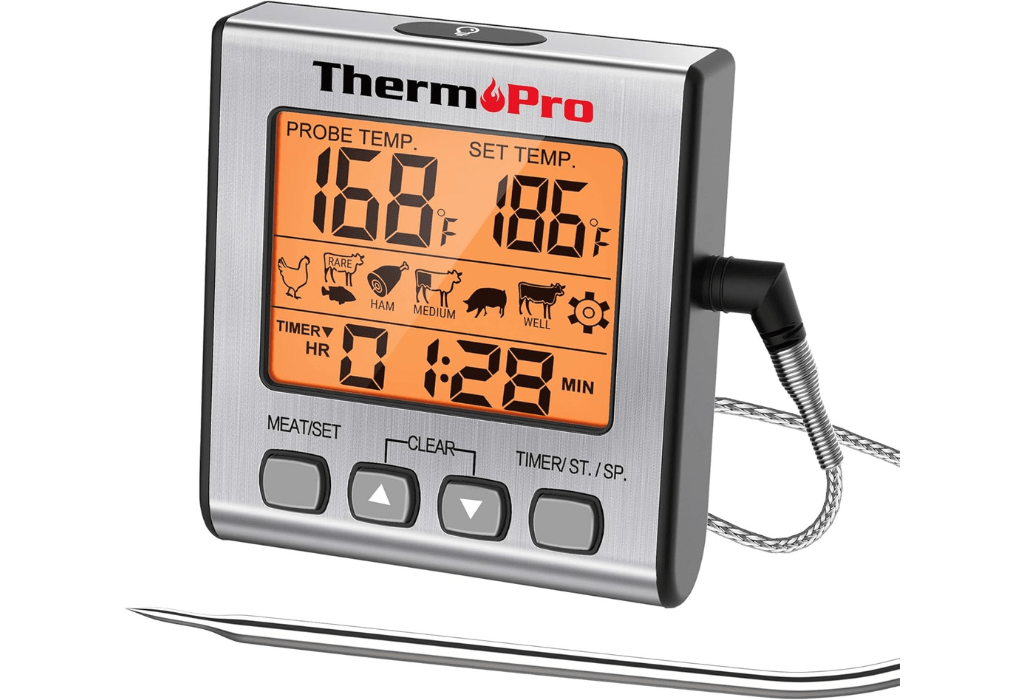#1 Ultimate Guide to Wireless Meat Thermometers
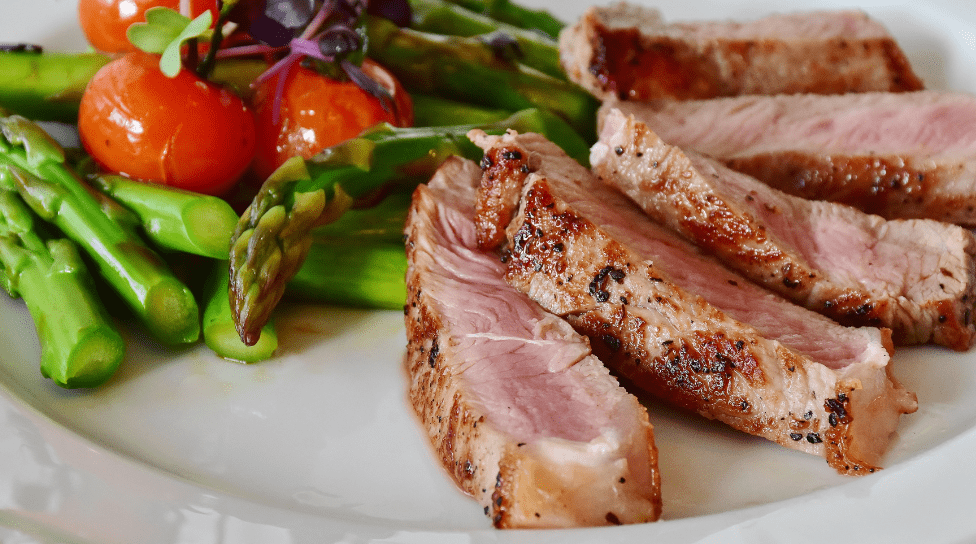
Welcome to our comprehensive guide on wireless meat thermometers, the must-have tool for any home chef or grilling enthusiast. In this article, we delve into the world of wireless meat thermometers, exploring their features, benefits, and how they can revolutionize your cooking experience.
Table of contents
Table of contents
Understanding Wireless Meat Thermometers
Wireless meat thermometers are ingenious devices designed to monitor the internal temperature of your meat while it cooks, without the need for constant supervision. They consist of a probe that is inserted into the meat and a transmitter that sends temperature readings to a receiver or smartphone app wirelessly. This allows you to keep track of your meat’s progress from a distance, ensuring perfectly cooked results every time.
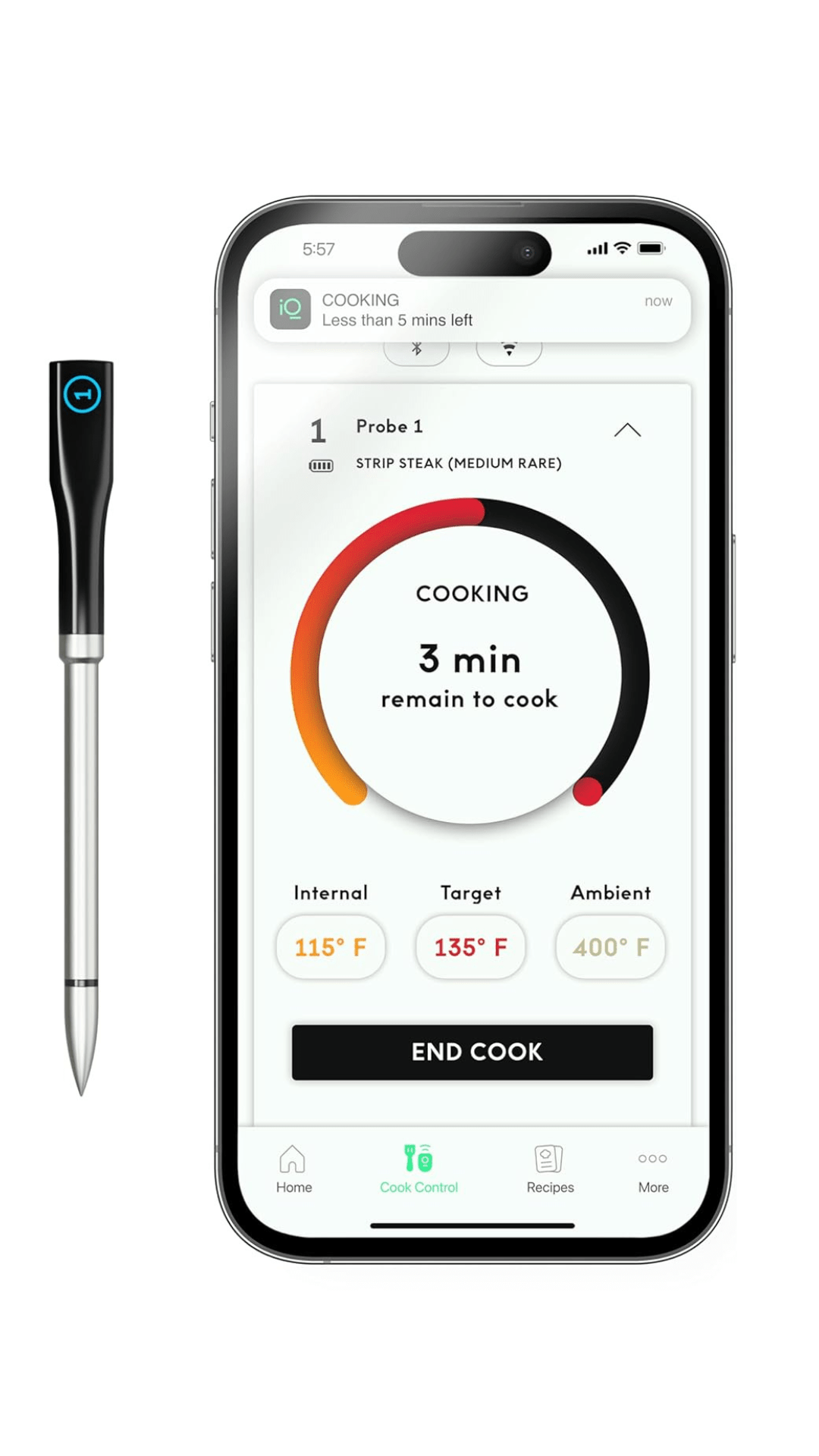
Photo by: Amazon
A wireless meat thermometer specially designed for smoking & oven
smoking
Here are some key features and considerations to keep in mind when selecting a wireless meat thermometer specifically for smoking:
1. Temperature Range: Opt for a wireless meat thermometer with a wide temperature range that encompasses the low and slow cooking temperatures typically used in smoking meats. It should be able to accurately measure temperatures ranging from 100°F (37°C) to 500°F (260°C) or higher.
2. Dual Probes: Look for a thermometer that comes with dual probes or multiple probe ports. This feature allows you to monitor the temperature of both the smoking chamber and the meat simultaneously, providing greater control and precision over the cooking process.
3. Wireless Range: Choose a thermometer with a sufficient wireless range that allows you to monitor your smoker from a distance without losing signal. A range of at least 100 feet (30 meters) is recommended, though some models offer even greater distances.
4. Remote Monitoring: Look for a thermometer that offers remote monitoring capabilities via a smartphone app or a separate receiver unit. This allows you to keep an eye on the temperature of your smoker and the progress of your meat from anywhere within the wireless range.
5. Alarm Functionality: Ensure that the thermometer includes customizable temperature alarms for both the smoker and the meat. These alarms will alert you if the temperature goes above or below your desired range, helping you maintain consistent heat levels throughout the smoking process.
6. Durability: Choose a wireless meat thermometer that is designed to withstand the rigors of outdoor cooking environments. It should be built with durable materials that can withstand exposure to heat, smoke, and moisture without compromising performance.
7. Accuracy and Calibration: Look for a thermometer with high accuracy and the ability to be calibrated if necessary. Accurate temperature readings are crucial for achieving perfectly smoked meats, so choose a thermometer that you can rely on.
8. Battery Life: Consider the battery life of the thermometer, especially if you plan on using it for long smoking sessions. Opt for a model with long-lasting batteries or rechargeable batteries to minimize interruptions during cooking.
oven
Here are some key features and considerations to look for when selecting a wireless meat thermometer specifically for oven use:
1. Temperature Range: Ensure that the thermometer has a wide temperature range suitable for oven cooking, typically ranging from around 32°F (0°C) to 572°F (300°C) or higher. This range covers the temperatures needed for baking, roasting, and broiling meats and other foods in the oven.
2. Probe Accuracy: Choose a thermometer with a probe that provides accurate temperature readings. Look for models with high-quality probes made from stainless steel or other durable materials that can withstand high temperatures without affecting accuracy.
3. Wireless Connectivity: Opt for a thermometer with reliable wireless connectivity, such as Bluetooth or RF (radio frequency), that allows you to monitor the temperature of your food from a distance. Make sure the thermometer has a strong and stable connection with the receiver or smartphone app to prevent signal dropouts.
4. Dual Probes: Consider a thermometer with dual probes or multiple probe ports, especially if you often cook large cuts of meat or multiple dishes simultaneously in your oven. Dual probes allow you to monitor the internal temperature of different foods at the same time, ensuring they are cooked to perfection.
5. Remote Monitoring: Look for a thermometer that offers remote monitoring capabilities via a smartphone app or a separate receiver unit. This feature allows you to keep an eye on the cooking progress without having to constantly check the oven, giving you more freedom to attend to other tasks.
6. Preset Temperature Alarms: Choose a thermometer with preset temperature alarms or customizable temperature settings that alert you when your food reaches the desired level of doneness. This feature helps prevent overcooking or under-cooking and ensures your dishes turn out just the way you like them.
7. Display and Ease of Use: Select a thermometer with a clear and easy-to-read display that provides instant feedback on the temperature readings. Intuitive controls and user-friendly interfaces make it simple to set up and operate the thermometer, even for beginners.
8. Durability and Cleaning: Ensure that the thermometer is built to withstand the heat and rigors of oven cooking. Look for models with heat-resistant construction and probes that are easy to clean after use, either by hand or in the dishwasher.
Instructions to Pick the Right Remote Meat Thermometer
1. Accuracy
Look for a thermometer with precise temperature readings to ensure accurate cooking results.
2. Range
Consider the range of the thermometer’s wireless signal to ensure it can transmit data effectively, even at a distance.
3. Durability
Opt for a thermometer made from high-quality materials that can withstand the rigors of cooking environments.
4. Additional Features
Some wireless meat thermometers come with additional features such as preset temperature settings, timers, and alarms, enhancing their functionality and convenience.
5. Tips for Using Your Wireless Meat Thermometer
- Always insert the probe into the thickest part of the meat for the most accurate readings.
- Avoid placing the probe directly above flames or hot surfaces to prevent damage.
- Clean your thermometer thoroughly after each use to maintain hygiene and prolong its lifespan.
Difference between Classic meat thermometer and wireless meat themometer
Classic Meat Thermometer vs. Wireless Meat Thermometer: Understanding the Differences

1. Design: A classic meat thermometer typically consists of a long metal probe with a temperature gauge at one end and a temperature scale marked along the probe.
2. Usage: It is designed to be inserted into the meat before or during cooking to monitor the internal temperature accurately.
3. Readability: The temperature reading is obtained by visually inspecting the gauge on the thermometer, which may require opening the oven or grill to check.
4. Monitoring: Requires physical presence near the cooking area to monitor the temperature changes.
5. Accuracy: Provides precise temperature readings at the point where the probe is inserted into the meat.
1. Design: A wireless meat thermometer comprises a probe(s) connected to a transmitter and a receiver unit. The probe(s) are inserted into the meat, and the transmitter sends temperature data wirelessly to the receiver.
2. Usage: It allows users to monitor the temperature of the meat remotely without the need to physically check the thermometer.
3. Readability: The receiver unit typically features a digital display that shows real-time temperature readings from the probe(s) placed in the meat.
4. Monitoring: Offers the convenience of monitoring temperature from a distance, enabling multitasking and reducing the need for constant supervision.
5. Accuracy: Provides accurate and consistent temperature readings, often with advanced features such as alarms for temperature thresholds and programmable settings.
10 Reasons Why a Wireless Meat Thermometer Will Change the Way You Cook
1. Convenience and Ease of Use
One of the primary reasons to invest in a wireless meat thermometer is the unparalleled convenience it offers. With wireless technology, you can monitor the temperature of your meat from a distance, allowing you to multitask or socialize without constantly tending to the grill or oven. Simply insert the probe into the meat, select your desired temperature settings, and let the thermometer do the rest.
2. Accurate Temperature Readings
Accuracy is paramount when it comes to cooking meat to perfection. Wireless meat thermometers utilize advanced sensors and probes to provide precise temperature readings, ensuring that your meat is cooked to the ideal level of doneness every time. Say goodbye to overcooked or undercooked meals and hello to perfectly cooked meats that melt in your mouth.
3. Versatility in Cooking Methods
Whether you prefer grilling, smoking, roasting, or sous vide cooking, a wireless meat thermometer is a versatile tool that can adapt to various cooking methods. From brisket to chicken to fish, you can use your wireless thermometer to monitor the temperature of any type of meat, allowing you to experiment with different recipes and cooking techniques with confidence.
4. Remote Monitoring Capabilities
Gone are the days of hovering over the grill or oven to monitor your meat’s progress. With a wireless meat thermometer, you can monitor the temperature of your meat remotely via a smartphone app or receiver unit. Whether you’re inside preparing side dishes or outside entertaining guests, you can keep an eye on your meat’s temperature without being tethered to the cooking area.
5. Preset Temperature Alarms
Wireless meat thermometers often come equipped with preset temperature alarms, alerting you when your meat has reached the desired level of doneness. Whether you prefer rare, medium-rare, or well-done, you can customize the temperature settings to suit your personal preferences and culinary needs. Express farewell to mystery and hi to impeccably cooked meats without fail.
6. Enhanced Safety Features
Sanitation is of most extreme significance while cooking meat. Wireless meat thermometers come with enhanced safety features such as heat-resistant probes and durable construction materials, ensuring that they can withstand high temperatures without compromising accuracy or performance. With built-in safety features, you can cook with confidence knowing that your wireless thermometer is up to the task.
7. Improved Cooking Results
Investing in a wireless meat thermometer can lead to significantly improved cooking results. By monitoring the temperature of your meat with precision, you can avoid common pitfalls such as overcooking or undercooking, resulting in tender, juicy, and flavorful meats that are sure to impress even the most discerning palates.
8. Cost-Effectiveness Over Time
While wireless meat thermometers may require an initial investment, they offer long-term cost-effectiveness by helping you avoid costly cooking mistakes and food wastage. By ensuring that your meat is cooked to perfection every time, you can enjoy delicious meals at home without the need for expensive restaurant outings or takeout orders.
9. Integration with Smart Devices
Many wireless meat thermometers are compatible with smart devices, allowing you to monitor your meat’s temperature via smartphone apps or voice-controlled assistants. With seamless integration with your existing smart home ecosystem, you can take your cooking game to the next level and impress your friends and family with restaurant-quality meals prepared in the comfort of your own kitchen.
10. User-Friendly Interfaces and Designs
Wireless meat thermometers are designed with user convenience in mind. With intuitive interfaces, easy-to-read displays, and ergonomic designs, these thermometers make cooking a breeze for both novice and experienced chefs alike. Whether you’re grilling outdoors or roasting indoors, you can rely on your wireless meat thermometer to deliver accurate and consistent results with minimal effort.

1. Convenience: Wireless meat thermometers offer the convenience of monitoring food temperature remotely, allowing you to attend to other tasks or activities without being tethered to the kitchen or grill.
2. Precision: These thermometers provide accurate and real-time temperature readings, helping you achieve perfectly cooked meats and dishes without the guesswork.
3. Dual Probes: Many wireless meat thermometers come with dual probes or multiple probe ports, enabling you to monitor the temperature of different foods simultaneously, enhancing efficiency and versatility.
4. Remote Monitoring: With the ability to connect to smartphones or separate receiver units, wireless meat thermometers allow for remote monitoring of cooking progress, providing peace of mind and flexibility.
5. Temperature Alerts: Most wireless thermometers feature customizable temperature alarms that notify you when your food reaches the desired level of doneness, preventing overcooking or undercooking.
6. Multi-functionality: Beyond meat, wireless thermometers can be used for monitoring temperatures in various cooking methods, including grilling, smoking, baking, and roasting, making them versatile kitchen tools.
7. Data Logging: Some advanced wireless thermometers offer data logging capabilities, allowing you to track temperature trends and cooking history over time, which can be useful for refining your cooking techniques.

1. Cost: Wireless meat thermometers can be more expensive compared to traditional thermometers due to their advanced features and wireless capabilities.
2. Battery Dependency: Wireless thermometers rely on batteries for operation, and if the batteries run out during cooking, it can interrupt the monitoring process and require replacements.
3. Connectivity Issues: In some cases, wireless thermometers may experience connectivity issues or signal interference, leading to inaccurate temperature readings or dropped connections.
4. Learning Curve: The setup and operation of wireless meat thermometers may require some learning and familiarization with the device and its features, especially for users new to this technology.
5. Maintenance: Wireless thermometers with multiple probes or complex features may require more maintenance and care to ensure proper functioning and longevity.
6. Range Limitations: The wireless range of some thermometers may be limited, especially in environments with obstacles or interference, which could affect the reliability of remote monitoring.
7. Durability Concerns: Depending on the brand and model, some wireless thermometers may not be as durable or resistant to heat, moisture, and other elements as traditional thermometers, requiring careful handling and storage.
Conclusion
In conclusion, a wireless meat thermometer is an essential tool for achieving culinary perfection in the kitchen or on the grill. With its precision, convenience, and versatility, it can elevate your cooking experience to new heights. Invest in a quality wireless meat thermometer today and take the guesswork out of cooking.
Thank you for investing your time and attention in exploring the ideas and insights we shared in our blog post.
Your engagement fuels our passion for knowledge and encourages us to continue sharing valuable content.
Happy reading!
(2024) top 5 Wireless meat thermometers
About This Item
- Completely wireless
- Bluetooth connected
- Built-in timers and alerts
- Assisted cooking programs
- Leave-in thermometer
- Magnetic charging dock
About This Item
- CHEF iQ
- MAXIMUM FLAVOR
- FREEDOM TO ROAM
- COMMAND CENTRAL
- POWERED BY THE CHEF IQ APP
About This Item
- Stable Wireless Signal & 500FT Remote Range
- Fast and Accurate Instant Reading
- Washable Dual Color-Coated Probes & Splashproof Transmitter
- USDA Preset Temperature Settings
- Alarm and Wide-view Backlit Screen
About This Item
- Monitor BBQ/Oven/Smoker temperature
- Programmable temp with alerts
- Large LCD display
- One-Touch backlight & Auto-Off
- Multiple storage options
FAQs
Q1: How do wireless meat thermometers work?
A1: Wireless meat thermometers typically consist of a probe(s) that is inserted into the meat to measure its internal temperature, and a transmitter that sends temperature data wirelessly to a receiver unit or smartphone app. The receiver unit then displays the real-time temperature readings, allowing users to monitor the cooking progress remotely.
Q2: Are wireless meat thermometers accurate?
A2: Yes, wireless meat thermometers can be highly accurate when properly calibrated and used according to the manufacturer’s instructions. High-quality models with precision sensors and reliable connectivity tend to provide accurate temperature readings, helping users achieve perfectly cooked meats and dishes.
Q3: Can I use a wireless meat thermometer in the oven?
A3: Yes, many wireless meat thermometers are designed for oven use and can withstand the high temperatures typically encountered during baking, roasting, and broiling. However, it’s essential to check the specifications and user manual of the thermometer to ensure it is suitable for oven use.
Q4: What is the wireless range of a meat thermometer?
A4: The wireless range of a meat thermometer can vary depending on the model and brand. Some thermometers offer a range of up to 100 feet (30 meters) or more, allowing users to monitor their food from a distance without losing signal. However, factors such as obstacles and interference may affect the actual range in practice.
Q5: How do I clean a wireless meat thermometer?
A5: To clean a wireless meat thermometer, gently wipe the probe(s) with a damp cloth or sponge after each use to remove any residue or food particles. Avoid submerging the transmitter or receiver unit in water, and follow the manufacturer’s instructions for cleaning and maintenance to ensure the longevity of the thermometer.
You May also Like: WHY STAINLESS STEEL COOKING SETS ARE TAKING OVER?

